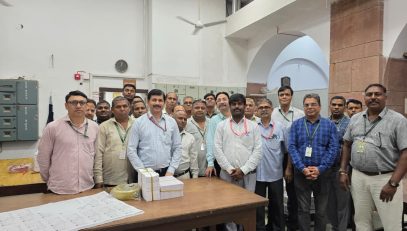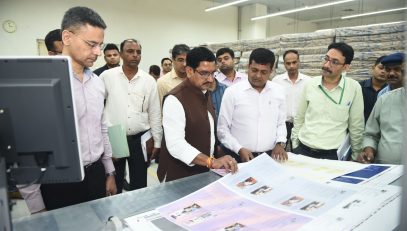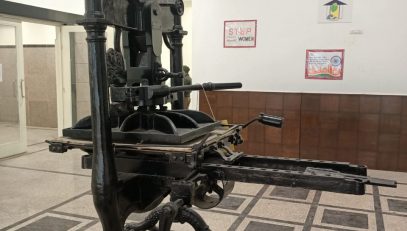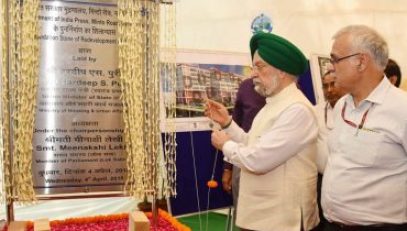Photo Gallery

Hon’ble Minister of State, MoHUA’s visit to GIP, Nashik, Maharashtra.

Hon’ble Minister of State, MoHUA’s visit to GIP, Rashtrapati Bhawan, New Delhi.

Inauguration of Dop Calendar, 2025 by MOS, MoHUA

Hon’ble Minister of State, MoHUA’s visit to GIP, Minto Road, New Delhi.

Visiting of GIP, Minto Road, New Delhi by Secretary, MoHUA

Visiting of GIP, Minto Road, New Delhi by Additional Secretaries, MoHUA

State-of-the-Art Machinery/Equipment installed at GIP, Minto Road under modernization program

A Glimpse into Printing Heritage: The 1931 installed Dawson Payne & Lockett (London) Proofing Machine..
Traditional Letterpress Proofing Press is a technique of relief printing. Using a printing press, the process allows many copies to be produced by repeated direct impression of an inked, raised surface against sheets or a continuous roll of paper. A worker composes and locks movable type into the “bed” or “chase” of a press, inks it, and presses paper against it to transfer the ink from the type, which creates an impression on the paper.
With certain letterpress units, it is also possible to join movable type with slugs cast using hot metal typesetting. In theory, anything that is “type high” and so forms a layer exactly 0.918 inch thick between the bed and the paper can be printed using letterpress.
Letterpress printing was the normal form of printing text from its invention by Johannes Gutenberg in the mid-15th century to the 19th century and remained in wide use for books and other uses until the second half of the 20th century. Letterpress printing remained the primary means of printing and distributing information until the 20th century, when offset printing was developed, which largely supplanted its role in printing books and newspapers.


